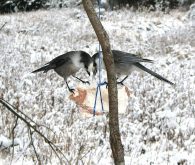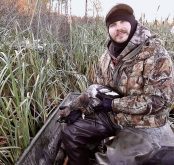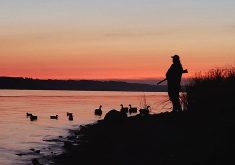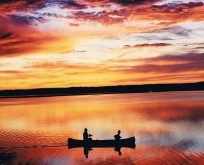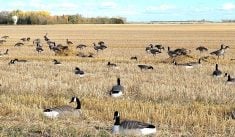Back in 1992, fly fishing got a popularity boost through the Brad Pitt-starring movie, A River Runs Through It.
The movie follows the loves and losses of a Montana family, and a passion for fly fishing is front and centre. The trout fishing scenes are stunning — although it helped that Pitt had a “casting double” to take care of some of the tricky technical bits of the activity.
Many viewers were moved to buy gear, hire guides and elbow into already-busy trout streams. As well-known fishing spots overflowed with earnest newbies, crusty old hands were left cursing, “That movie!”
Read Also
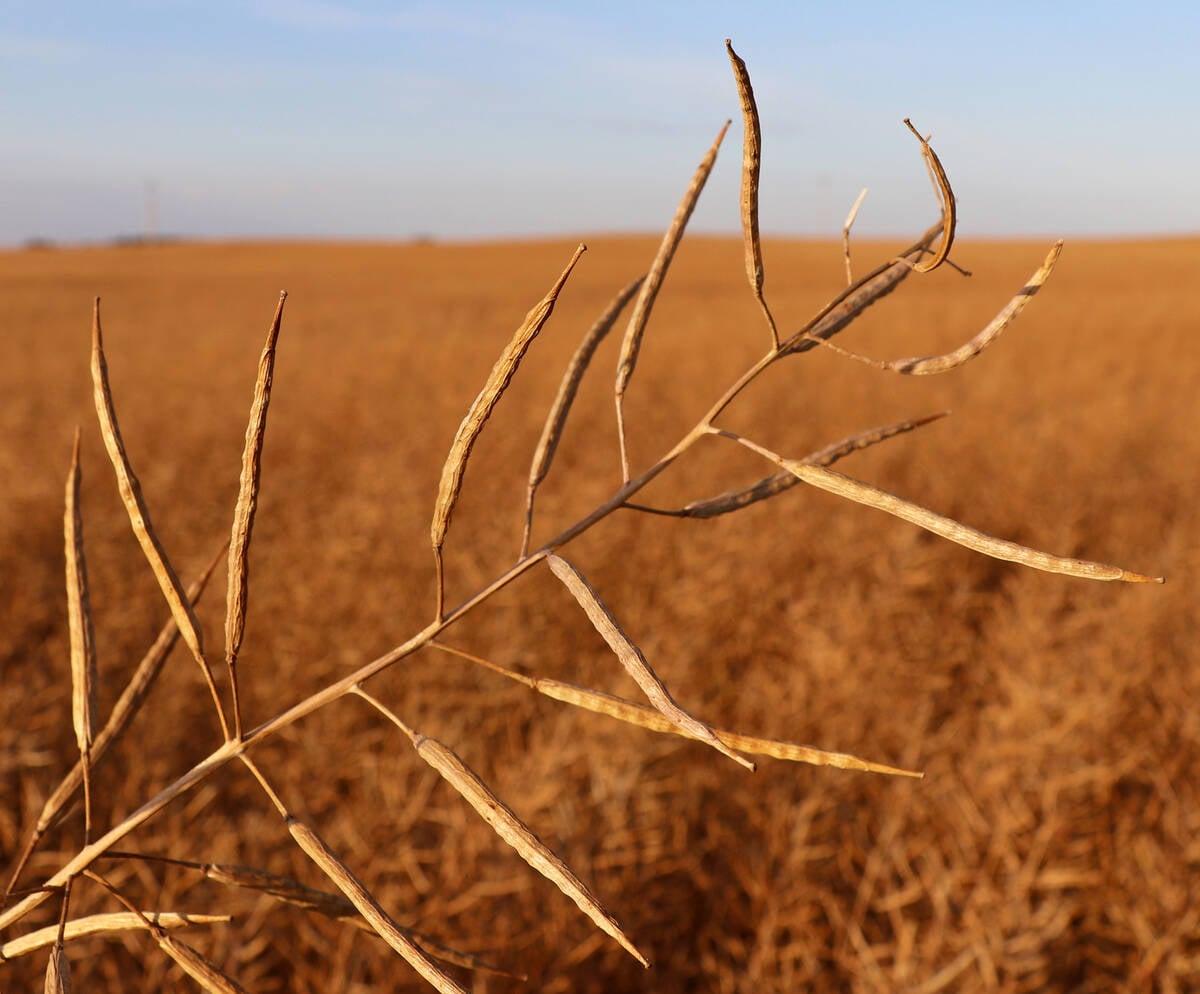
Canola suffers chaotic 2025
Canola had something of a tumultuous 2025, pushed one way or another by a variety of factors. Nearby canola futures traded in a wide range from about C$550 to C$750 per tonne over the last year, but were within a few dollars of where they started by December with the most-active March contract in the middle of that range at nearly C$633 as of Dec. 11.
My fly fishing journey began well before “that movie.” My brother and I used to pool our money for subscriptions to iconic outdoors magazines like Outdoor Life and Field and Stream. We were especially drawn to articles on fly fishing, an exotic activity that, honestly, didn’t make much sense in most of flatland Manitoba.
There may have been 100 local fly fishers back in the 1960s.
Lucky for my brother and I, some of them started the Manitoba Fly Fishers Association. I was only in junior high, but I was welcomed to join, received lessons in casting and fly-tying, and got to tag along on some club fishing outings.
I haven’t looked back.

Does fly fishing even work in Manitoba?
Babbling brooks and trout are what most people associate with fly fishing.
The first references to fishing with artificial flies go back about two millennia to Roman times. Fast-forward to the 1500s, fly fishing for trout and salmon was mainly a recreation for Europe’s landed gentry. Today, fly fishing has made great leaps in gear, accessibility and species fished. Anyone can take it up if they commit some dollars and persist through early stage frustrations.
I’ll admit that fly fishing in a mountain river is awfully close to my angling Holy Grail, but there are no end of opportunities close to home for Manitoba anglers. I’ve fly fished locally for pike, smallmouth bass, goldeye, whitefish, channel catfish, freshwater drum, carp and walleye.
We also have spectacular trout fishing in some stocked lakes — the best of which are found in western Manitoba — but I mostly fish for native species and I have a ton of fun.

Local catches
My earliest fly fishing tale starts with a family trip to a noted walleye spot below a popular waterfall. We tried our go-to lures. Others around us used minnows on pickerel rigs. Everyone got skunked.
After a few fruitless hours, I took out my fly rod, which I had just bought and was still learning to use. I figured I could get in some casting practice and, well, maybe show off a little. Back then, fly fishers in these parts got second looks.
I tied my streamer fly to look like a small minnow and, after a few casts, was shocked by a tug on the line. I clumsily brought in a nice walleye.
Over the next hour, I landed three more keepers while a crowd of onlookers, myself included, wondered what had just happened.
Over the decades, I’ve had my share of mediocre fly fishing trips, but I have also had many days when I caught good numbers of fish, days with a few large fish in the mix and the odd time where I landed lots of large fish.
There’s a view out there that fly fishing is a delicate affair. I’m now up to 17 species of fly-caught fish where at least one has been of master angler size. It goes to prove that fly fishers can do just fine fishing local waters.

Choose the right spot
It’s important to remember that fly fishing won’t work everywhere.
Generally, your effective depth range is up to seven meters, though I usually go shallower, and muddy waters present a special challenge because there is no smell to a fly.
My fly rod stays in its case if I’m fishing deep for walleye, but I have caught them on flies in river pools and rapids. You have to pick your spots.

Get started with fly fishing
When people tell me they’d like to take up fly fishing, I always ask why.
There’s a cash outlay for new equipment, and it takes a hefty dose of persistence to become sufficiently skilled to start catching fish. Conventional fishing gear is more effective than a fly rod in many situations, especially in these parts, and it’s way easier.
But if you’re seduced by the aesthetics of fly casting — I still am after all these decades — and are interested in learning a quirky skill that’s more demanding than casting daredevils, trolling crank baits, or sitting back and watching a baited line, here are a few things to consider:
Find a mentor: The fastest way forward is to be coached by a competent fly fisher. Ideally, they will stick with you until you can cast well enough to catch some fish. Nowadays, competent teachers can be hired locally. I know one that can be reached at flyfishingmanitoba.com, and there are probably others nearby.

Local opportunties: If you live within driving distance of Winnipeg, there are tremendous benefits to joining the Manitoba Fly Fishers Association. After 56 years, they still have a jam-packed program that includes a fly fishing course, fly tying, presentations on fishing adventures and club fishing trips that can include on-the-water guidance.
Self-teaching: These days, the internet is a third option. The quality of instructional videos online can be exceptional. I have met competent young fly fishers who mostly learned from the internet.
If you can’t get to association meetings or take a fly fishing course, try a combination of advice from mentors, online videos, practicing like crazy and not giving up.

Learning to cast
With conventional gear, a cast is the result of arm action, the rod and the weight of the lure. The whip of the rod accelerates the lure and the lure’s weight propels it forward.
When the lure is a bit of fluff though, the weight you need comes from the fly line. The line is a plastic-coated cord, and that’s key to making a cast. The other key is the fly rod, which is generally eight to 10 feet long and quite flexible. The momentum generated by the rod is carried by the line and your fly trails along for the ride.
You can practice the basics on a patch of grass, but before you get on the lawn and start flailing, watch some online introductory videos. I checked out a few and this one stood out: How to Cast a Fly Rod — Ultimate Beginner Casting Guide. Along with good footage, the host highlights the basic rules:
- Proper grip of the rod handle.
- Moving the rod between “10 and two,” using a clock face as your guide.
- Using your wrist and forearm to move the rod.
- Keeping the rod moving in one plane.
- Knowing when to stop the rod as you cast.
- Watching your back cast.
This list won’t make sense until you’ve watched the video or are more familiar with fly fishing parlance, but it holds the commandments of effective casting. When your first efforts fail, as they inevitably will, reviewing this list can help you figure out your mistakes.
Better still, combine the list with analysis of video that someone has taken of you from the side while you are casting. The mistakes should become apparent.
In addition to the basic cast, it’s good to also learn the roll cast right away. It’s the easiest cast to get under your belt. The previously mentioned video has a link to another roll cast video.
Keep practicing and, once you’re casting comfortably out 10 to 15 meters or so, it’s time to go fishing.

Fly fishing gear
With conventional fishing, you can do okay with rods that aren’t all that good. But a lousy fly rod makes a beginner’s task much harder. Here, “lousy” refers to a poor rod action, not how nice it looks.
Good fly rods are not automatically expensive, but cheap rods should be avoided unless an experienced fly fisher can recommend one. Mid-priced rods ($125 to $300) are generally more reliable, but you still need to match a rod with a suitable line and reel. Learning with a rod that has a mismatched line is as bad as starting with a lousy rod. The stiffness of a rod will dictate the appropriate weight of line needed to match it (designated by a numbering system).
Combination outfits — rod, reel and line sold as a package — can save the day.
Low-priced combos, generally under $150, should be avoided. At $250 and higher, you should be getting a decent rod matched with an appropriate line weight and a functional reel. Companies with good reputations include TFO, Reddington and Orvis. (All prices suggested here are prior to the impacts of tariffs, which are still playing out.)
Avoid internet deals from outfits that aren’t well-established fly fishing companies.
If you want to fish mostly for trout in our lakes, then a nine-foot rod made for a five- or six-weight fly line does the job.
If you are going to fish mainly for species like pike and bass — or may end up at Lockport fishing for drum and catfish — then an outfit with a nine-foot rod and eight- or nine-weight line is a good choice. I prefer the latter, but nine-weight combos are harder to find.
Pre-made leaders made of monofilament or fluorocarbon that match your fishing requirements are widely available.
These days, well-made flies for trout, bass, pike and other species are available locally and online. This allows you to defer the decision to learn fly tying on top of everything else. Figure out your target species and ask around, or search the internet for local advice on patterns and sizes before you build your fly inventory. Keep your purchases modest at the beginning.
A good pair of chest waders is needed if you’re going to fish in creeks and rivers. In smaller lakes, many anglers use float tubes, portable one-person pontoon boats (often called kick boats) or fishing kayaks.
Is fly fishing for you?
It could be. If conventional angling leaves you a little wanting, you’re intrigued by fly fishing’s challenges and opportunities and you can be like a dog with a bone when learning new tasks, you might want to give it a try.




